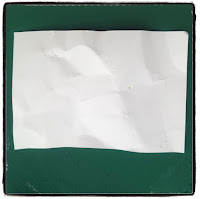Distress Inks - A Tutorial
Sunday, January 08, 2012I love my Distress Inks. There is so much that you can quickly do with them to create different effects. When I was looking at the concept for the 'Dream' card, I thought I would experiment with a few different techniques using my Distress Inks for the background. I thought I would share a photo tutorial showing the basics for creating your own backgrounds. Please keep in mind that these were done very quickly to view a variety of effects and will alter depending on the colour/intensity/technique that you use. I am also no expert in Distress Inks but just enjoy playing around to achieve different looks.



And that's it! Four different techniques to get you experimenting with your Distress Inks. Please keep in mind that I am no professional with using the Distress Inks and am still learning myself, though I found these techniques helpful to create custom cardstock for my projects.
If you would like to learn more, the Tim Holtz Blog has some fantastic video tutorials which are very helpful!


































2 comments
I needed to come across this tutorial. I'm very heavy handed with my sponging and most attempts end up in the bin. Thanks I'm going to give it another try following your tips.
ReplyDeleteI just love distress and the many different ways to use them :-) And the more you use these techniques them more creative you get making your own techniques.
ReplyDelete